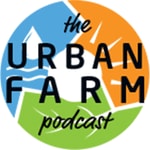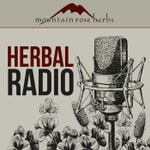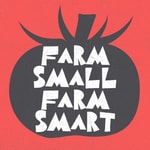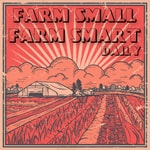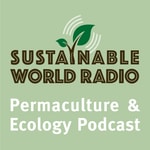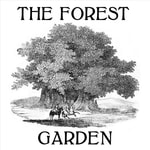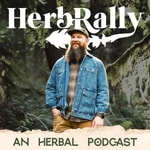The Plant Report- Every Plant Has A Story – Détails, épisodes et analyse
Détails du podcast
Informations techniques et générales issues du flux RSS du podcast.
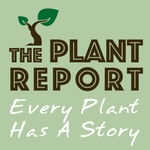
The Plant Report- Every Plant Has A Story
Jill Cloutier
Fréquence : 1 épisode/99j. Total Éps: 38

Classements récents
Dernières positions dans les classements Apple Podcasts et Spotify.
Apple Podcasts
🇨🇦 Canada - naturalSciences
04/08/2025#68🇨🇦 Canada - naturalSciences
03/08/2025#49🇨🇦 Canada - naturalSciences
02/08/2025#38🇨🇦 Canada - naturalSciences
01/08/2025#31🇺🇸 États-Unis - naturalSciences
01/08/2025#93🇺🇸 États-Unis - naturalSciences
31/07/2025#66🇨🇦 Canada - naturalSciences
26/07/2025#92🇨🇦 Canada - naturalSciences
25/07/2025#76🇨🇦 Canada - naturalSciences
24/07/2025#63🇨🇦 Canada - naturalSciences
23/07/2025#44
Spotify
Aucun classement récent disponible
Liens partagés entre épisodes et podcasts
Liens présents dans les descriptions d'épisodes et autres podcasts les utilisant également.
See all- https://allpointsdesign.ca/
15 partages
- https://landinstitute.org/
8 partages
Qualité et score du flux RSS
Évaluation technique de la qualité et de la structure du flux RSS.
See allScore global : 38%
Historique des publications
Répartition mensuelle des publications d'épisodes au fil des années.
The Fabulous Fig
Épisode 38
mardi 16 mai 2023 • Durée 54:29
Episode 38: Our plant today is Fig and our guest is Dr. Lee Reich. Lee is a writer, horticultural consultant, and educator with graduate degrees in soil science and horticulture.
Lee is a big fan of Figs (Ficus carica) and in this episode we learn how to successfully propagate, grow, and harvest this ancient plant. Lee explains why it’s a challenge to know how many varieties of Figs there really are and shares his tips about how to keep your Fig trees healthy and happy.
Figs are unique in the fruit world. Did you know that when you eat a Fig, you aren’t eating a fruit? A fig is really a syconium (or synconium), a part of a stem that expands into a sac containing flowers. Luckily for us, Fig syconiums are so delicious!
Although, Figs are a true Mediterranean plant, they are adaptable and resilient. Those who live in colder climates, rejoice! You can successfully grow Figs and enjoy your own delicious syconiums. :) Lee shares some of his many methods for Fig growing in cold regions, including growing them in pots, overwintering them in greenhouses and basements, and pruning them so their low growing arms are very close to the ground. Learn more about these techniques in depth in Lee’s book Growing Figs in Cold Climates.
A former plant and soil researcher for the U.S. Department of Agriculture and Cornell University, Lee’s books include Weedless Gardening, Uncommon Fruits for Every Garden, and Growing Figs in Cold Climates. Lee wrote a syndicated gardening column for the Associated Press for nearly 30 years.
Lee’s farmden- his term for his more than a garden, less than a farm, piece of land, has been featured in many publications like the New York Times and Martha Stewart Living and has won awards from National Gardening and Organic Gardening magazines.
Visit Lee’s website at leereich.com to learn about Figs, fruit, gardening, soil, and more!
Lee was a guest on my other podcast Sustainable World Radio. Click here to listen to the episode Gardening Like Nature, where Lee discusses the art and science of building soil from the ground up and why he believes it’s important to pay attention to the top few inches of soil and let nature take care of the rest. Learn about mulch, the importance of compost, and why Lee loves to repurpose what others might call waste in his quest to improve soil fertility and grow vibrant and resilient plants.
The Wild World of Hops
Épisode 37
samedi 4 décembre 2021 • Durée 55:12
Welcome to the world of Hops, Humulus lupulus.
In this relaxed conversation with organic farmer and Hops grower Acadia Tucker, we discuss this unwieldy and happy to be alive plant. We touch briefly on the history of Hops, which like its illustrious relative Cannabis, was once feared as a “wicked weed.” Now revered for its distinctive bitter flavor and potency as a nerve tonic, Hops is grown worldwide.
Acadia talks about the difference between a bine and a vine, how to propagate Hops, and why the European Corn Borer is such a tenacious pest for Hops crops.
We chat about what Hops needs to thrive, how to integrate Hops into your landscape as a home grower, and how It can grow so tall that farm workers in the past used to harvest it wearing stilts!
Acadia and I also discuss the chemical components of Hops and some of the nonalcoholic ways to utilize it including paper making, fiber, natural dye, and as a medicinal tea for relaxation and insomnia.
Acadia Tucker is a regenerative farmer, climate activist, and writer. Her books are a call to action to gardeners everywhere to get growing! Acadia is the author of Growing Good Food: A Citizen’s Guide to Backyard Carbon Farming and Tiny Victory Gardens: Growing Good Food Without a Yard. Acadia lives in Maine with her farm dog Nimbus where she grows Hops and other perennials. Learn more about Acadia Tucker at AcadiaTucker.com.
Other links mentioned by Acadia in this episode:
The Lovely Loquat
Épisode 28
vendredi 13 avril 2018 • Durée 25:37
Episode 28: Have you ever heard of Loquats? In this episode, farmer, educator, and author Ken Love talks about this sweet and prolific fruit tree.
Found throughout the world, Loquats (Eriobotrya japonica) are easy to grow and maintain. Also known as Biwa and Pipa, Loquats have a long and intriguing history and offer the home gardener an abundant source of delicious fruit with high levels of Vitamin A and Potassium.
Loquats are also powerful medicine. The leaves are used medicinally in teas and syrups to clear the lungs.
Ken tells us what Loquats need to thrive, how to prune them for high quality fruit production, and how to harvest them for longer shelf life and maximal nutrition.
Ken Love specializes in tropical fruit horticulture and grows more than 200 types of exotic fruits on his farm on the Big Island of Hawaii. You can learn more about Ken at his website HawaiiFruit.net or at HawaiiTropicalFruitGrowers.org.
Lovely Lavender
Épisode 27
vendredi 23 février 2018 • Durée 51:27
Episode 27: Learn about Lavender with farmer Lori Parr.
Lori, aka Lavender Lori, farms Lavender in Western Montana on Rosalie Ranch where she distills her own brand of essential oils and hydrosols. Lori is also the author of the soon to be published book, Lavender Farming in High Elevations and Harsh Climates: Secrets from a Hard Row Hoed.
In this interview Lori tells us how to propagate, grow, and harvest Lavender and shares with us some of the many ways to use this aromatic and delightful plant. Did you know that Lavender oil is excellent for burns, blisters, headaches, and insomnia? Or that Lavender hydrosol can be used for skin care, cleaning, and as a body wash?
To learn more about Lavender and Lori, visit her website at LavenderLori.com.
Native Plants of the Appalachian Woodlands
Épisode 26
vendredi 13 octobre 2017 • Durée 50:47
Episode 26: Learn about native Appalachian herbs in this interview with educator, designer, and farmer Trevor Piersol. Co- founder of the Shenandoah Permaculture Institute, Trevor grows perennial fruits and medicinal herbs, with a focus on easy-care native plants, in his home state of Virginia.
Appalachia, a vast mountain region of the United States, is rich in botanical diversity and herbal lore. In this episode, Trevor talks about American Ginseng, Goldenseal, Blue Cohosh, Black Cohosh, and two of the many fungi that grow in this region, Reishi and Chaga. Trevor shares with us the type of medicine these plants provide, how to use them, how to ensure that the plants you buy are ethically harvested, and how you can grow them at home or in a nearby woodland.
Threatened by habitat loss, climate breakdown, poaching, and over-harvesting, these living treasures need to be protected.
For more information about Trevor and his work, visit the Shenandoah Permaculture Institute.com.
Hawthorn for the Heart
vendredi 23 juin 2017 • Durée 36:17
Episode 25: Have you heard of Hawthorn? Herbalist Bonnie Rose Weaver is a big fan and in this episode fills you in on why she loves this plant!
Hawthorn, Latin name Crataegus, is a heart tonic extraordinaire. A member of the Rose family, (like Bonnie), Hawthorn is also known as May Apple, Mayblossom, and the May Tree. Edible parts of the plant include the young leaves and flowers and the fruits or berries. Medicinally, Hawthorn has been used to prevent and treat heart problems, to regulate blood pressure, and to increase vein health.
Hawthorn berries are rich in antioxidants and can be made into jams and incorporated into a medicinal honey. The flowers and leaves can be made into tinctures.
Hawthorn has a rich folklore and history. Fairies are said to hang out with Hawthorn and in Welsh lore, the Goddess Olwen walked an empty universe and left a trail of Mayblossoms which became the Milky Way.
Hawthorn also provides shelter and food for a biodiverse group of small mammals, insects, and birds. According to Bonnie, Hawthorn is also a valuable plant ally for those times when you are dealing with heartbreak or heartache.
Bonnie Rose Weaver is an urban farmer, community herbalist, artist and educator in San Francisco, CA. In 2014, Bonnie launched the seed to bottle apothecary - 1849 Medicine Garden, a project that teaches urbanites about the benefits of locally grown plant medicine. Bonnie is the author of the book, Deeply Rooted: Medicinal Plant Cultivation in Techtropolis.
The Medicinal, Edible Thistle
mardi 7 mars 2017 • Durée 17:13
Episode 24: Thistles! To many of us, they are those annoying, prickly plants that "bite." Classified as a noxious weed in many areas, thistles are the topic of this podcast with Thistle admirer Katrina Blair, author of the book The Wild Wisdom of Weeds, 13 Essential Plants for Human Survival.
What does Katrina do for Thistle weed control? She eats them!
In this episode Katrina Blair talks about the many uses of this weedy plant. Thistles regenerate liver cells, are full of minerals, and their leaves make an alkaline drink. You can make flour out of thistle seeds, chew the flowers and white fluff as a gum, and use large amounts of fermented thistles as a substrate for growing oyster mushrooms.
Other edible parts of Thistles include the root which Katrina makes into a Chai Tea or eats like a potato and the stalk which is sweeter than celery. Katrina's favorite Thistle variety is the Musk Thistle: Carduus nutans.
To learn more about Katrina's work, visit her website: Turtle Lake Refuge.org. To hear a longer interview with forager, chef, writer, and plant lover Katrina Blair on Sustainable World Radio, click here.
Marvelous Mallow
vendredi 3 mars 2017 • Durée 09:08
Episode 23: Katrina Blair, author of the Wild Wisdom of Weeds, shares the many medicinal, culinary, and cosmetic uses of Mallow. We focus on Malva neglecta, a common weed found around the world. In many places, Malva is known as an invasive species, so why not utilize this ubiquitous plant?
In this episode, Katrina gives her recipes for a sweet Mallow Milk and a "living" body lotion. She also talks about the medicinal uses of Malva (it's great for sore throats and laryngitis) and how to prepare it like a vegetable.
This was recorded at the Heirloom Expo. Sorry folks for any background noise!
Katrina Blair is a forager, chef, writer, and plant lover who runs the nonprofit Turtle Lake Refuge whose mission is to celebrate the connection between personal health and wild lands. If you'd like to learn more about Katrina's work and get her recipe for Wild Marshmallows, check out her book on our Links Page.
To hear a longer interview with Katrina Blair on Sustainable World Radio, click here.
Durian: The Aromatic King of Fruits
lundi 12 décembre 2016 • Durée 50:17
Episode 22: Imagine leaving your regular life behind and traveling for a year in search of a ripening fruit. This is what Lindsay Gasik did and it changed her life. The fruit she was searching for is Durian. One of the largest tropical fruits, Durian are renowned for their unusual taste and aroma and have the reputation of "smelling like hell and tasting like heaven." In fact, their strong odor is so pungent, Durians have been banned from the Singapore Rapid Mass Transit System. Durians are high in fat and sugar, covered in thorns, can weigh up to 22 pounds, and fall off the tree when ripe. Be sure to look out for this falling fruit!
In 2012, Lindsay set off on a twelve month sojourn around Southeast Asia to follow the Durian season. In this podcast interview we learn about her travels on the Durian Trail, how to eat and prepare Durian, the parallels between wine and Durian, and what happens when you follow a fruit to explore other cultures. Lindsay also tells us how she became a Durian Travel Agent and why she still loves this thorny, aromatic King of Fruit!
To learn more about Lindsay and Durian, visit her website: Year of the Durian.com
Relax and Calm With Lemon Balm
vendredi 14 octobre 2016 • Durée 26:29
Episode 21: Lemon Balm, Melissa officinalis, is an easy to grow herb with many uses. To learn about Lemon Balm, I spoke with Kami McBride. Kami is an herbalist, herbal medicine instructor, and creator of the Living Awareness Institute. Kami has 27 years of experience in inspiring people to use herbs in their daily lives and in this episode, she shares her knowledge about this wonderful plant.
Lemon balm makes a pleasant tasting tea, lemonade, and infusion. Palatable to children, Lemon Balm fights colds and flus, is antispasmodic, and carminative. Kami talks about how and when to harvest and use lemon balm and why she calls it a "confetti herb." Kami describes Lemon Balm as the "crowd-pleasing herb" because it elevates mood and is soothing and calming.
A favorite of bees, Lemon Balm is a great addition to your garden.
Kami advises people to "let yourself fall in love" with a plant and Lemon Balm is an easy herb to fall for.
To hear a 2009 interview with Kami McBride on Sustainable World Radio, click here.
